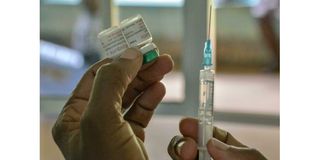Second cheaper Malaria Vaccine approved by WHO

Health clinics in western Kenya -- where paediatric wards full of children sickened by malaria are not uncommon -- are starting to see results from the vaccine. PHOTO | AFP
Dar es Salaam. The World Health Organization (WHO) has approved a new Malaria vaccine, the R21/Matrix-M vaccine, developed by Britain’s Oxford University.
In the statement issued Monday, October 2, 2023, the WHO wrote that “Both vaccines are shown to be safe and effective in preventing malaria in children and, when implemented broadly, are expected to have high public health impact.”
This makes just the second vaccine approved by the WHO after following the RTSS/AS01 vaccine, which received a WHO recommendation in 2021.
WHO director-general Dr Tedros Adhanom Ghebreyesus was quoted saying, “As a malaria researcher, I used to dream of the day we would have a safe and effective vaccine against malaria. Now we have two.”
Tedros described it (the vaccine) as “…a vital additional tool to protect more children faster, and to bring us closer to our vision of a malaria-free future.”
According to the WHO boss, the vaccine will be rolled out in some African countries, including Burkina Faso, Ghana, and Nigeria in early 2024, and will be available in mid-2024 in other countries.
Dr Tedros said that doses would cost between $2 and $4 (between Sh4,964 and Sh9,900) as per today's exchange rates, making it a cheaper vaccine compared to others.
Tanzania is among the ten countries with the highest malaria cases and deaths.
Data from the Ministry of Health shows that there were 3.5 million cases of malaria reported in the 2022/2023.
This, however, was a slight decline from 4.4 million cases reported in 2021/2022.





